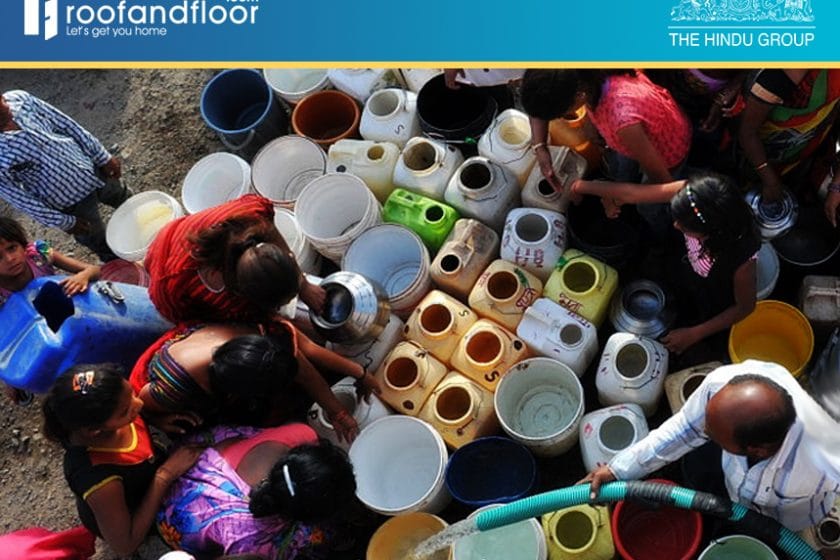Bangalore will be unlivable by 2020, projected an alarmist headline in a major newspaper last year after an urban expert’s prediction. That dire prediction shook Bangalore, but with time, it has been forgotten. This year, the monsoon has been deficient again, and Bangalore is slowly staring at a future without water.
A recent newspaper report warns that Bangalore might have to supply water on a rotation basis every three days if reservoir levels continue to plunge.
It’s not just Bangalore. India will have a water deficit of 50% by 2030 as per an estimate by The Asian Development Bank. Particularly, places like Gujarat, Karnataka, Rajasthan, Haryana, and Punjab are among the states where the withdrawal of water is 100% more than the availability.
Bangalore’s serious water problem
The roots of Bangalore’s current water crisis go back a long way. Karnataka has been embroiled in the bitter Cauvery dispute, which has its origins as far back as 1892 when Tamil Nadu and Karnataka drew up plans to share the reserves of the river Cauvery. In 2016, as many as 106 taluks were declared as drought affected areas with Karnataka receiving 29% less rainfall compared to 2015, leaving the Cauvery as well as dams across the state nearly dry.
With the last three to four years seeing a lack of rain, the Karnataka government, especially its most populous city Bangalore, has been in a tizzy trying to find water for its citizens. Scarily low levels of water in the state’s reservoirs and a sparse monsoon drying up the Cauvery has made the prospect of receiving a supply of water just once in three days highly imminent for Bangaloreans.
Currently, Bangalore’s residents are highly dependent on tanker cartels who in turn rely on private borewells as their source. The most recent data shows that there are 68 tankers in operation under the Bangalore Water Supply and Sewerage Board (BWSSB) and tenders have been submitted for an additional 100 tankers. This summer, Bangalore MLAs raised objections towards these thriving cartels and have appealed to the government to take over these private borewells.
Solutions for a better Bangalore
An estimated 150 litres per capita per day is required for a city like Bangalore, which has 8.5 million residents. But urban planners believe that even 100 litres of water per capita per day would do for Bangalore, and there is no need to reach panic levels as yet. Solutions like rainwater harvesting can help recharge groundwater levels that have been depleted by rampant exploitation from borewells. Surface water treatment plants can also supply more of Bangalore’s water requirements. Redesigning plumbing units and treating water from sewers will separate potable water and pump water back into Bangalore’s homes.
Bangalore has history to learn from. The city used to have chain tank systems, which were fundamentally rainwater harvesting structures used for drinking and irrigation purposes. A Comptroller and Auditor General of India report (CAG) from 2011 says that only 10% of Bangalore’s sewage water undergoes treatment leaving a huge 1080 million litres laid to waste.
Bangalore’s citizens are now awakening to the bleak reality of a dry city and are forming groups to spread awareness about water conservation. Installing systems for rainwater harvesting, appealing to concerned authorities for more water treatment facilities, reclaiming and cleaning some of the city’s lakes, and promoting ideas for making the best use of existing water supplies are the core initiatives of these groups. Is it too little too late?
This article was originally published on www.thehindu.com dated July 18,2017






